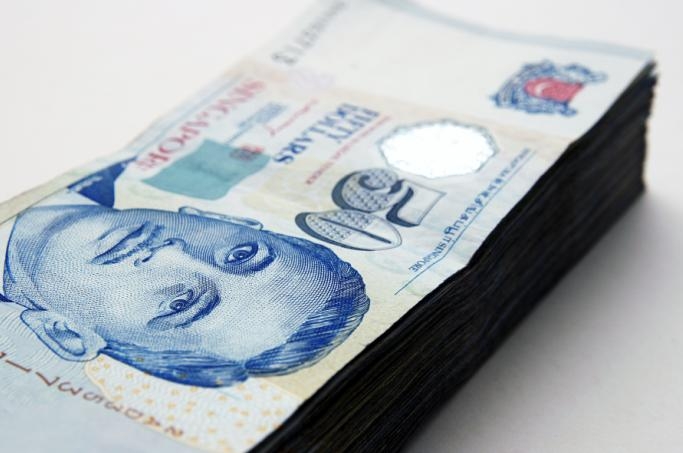
Singapore dollar trades at $1.221
The local currency saw little change against the US dollar despite traders taking on more risk.
IG Markets Singapore said:
The Singapore dollar saw little change against the greenback last night despite traders taking on more risk after positive data out of the US.
Consumer confidence is returning to the world’s biggest economy and has given a shot in the arm to risk-on trading at the start of the week.
But the local currency moved very little sitting at $1.221 this morning. It also saw very little activity following last Friday’s surprise announcement by the MAS to keep its monetary policy unchanged.
Singapore retail sales came in at 3.2% higher for August while should boost confidence in the local economy and currency this week.
But traders will be keeping a watchful eye on China Q3 GDP data due out this week to determine the general direction of Asian currencies.
DBS Group Research meanwhile noted:
EUR/USD is holding up well into the EU Summit scheduled for October 18-19. Since the Fed’s announcement of QE infinity on September 13, the currency pair has been fluctuating between the 200- and 300-day moving averages, last located at 1.2825 and 1.3065 this morning.
Despite the European Central Bank’s Open Market Transactions (OMT) announced on September 6, US money market rates fell faster than their EU counterparts. That said, US rates are still higher than EU rates. Hence, win one, lose one, go nowhere for EUR vs USD. Nonetheless, several factors suggest that EUR/USD is setting its sights higher at the testing the 300-day moving average again.
Currently, there are two risks into the EU Summit. First, will Greece be able to meet the troika’s austerity/reform requirements to stay in the union? Second, will Spain finally ask for a full bailout? Then again, are these risks worth losing sleep over?
Or have the markets come to regard them simply as issues now because the ECB has stepped forward to fill the vacuum between the weak EU countries and the stronger core countries. The former has grown weary of demands for austerity and reforms, while the latter appears to be suffering from bailout fatigue.
Externally, there is cautious optimism that green shoots may be sprouting for the global economy. Like it or not, the US unemployment rate did fall below 8%. In China, all eyes will be on this Thursday’s GDP report to see if the world’s second economy is turning the corner. Ever since the Fed signaled its QE intentions at its Jackson Hole symposium in August, the various USD/CNY rates traded onshore and offshore have all come off their highs.
Put simply, these CNY rates have moved from posting year-to-date depreciation to YTD appreciation. Even the official parity fixing of USD/CNY was lowered to 6.3112 yesterday, bringing it closer to its end-2011 rate of 6.3009.
The delay of the US Treasury Currency Report coupled with the Fed Chairman Ben Bernanke encouraging more currency appreciation in emerging markets also suggested that US may be starting to push for a weak US dollar as it prepares to consolidate its fiscal finances next year.
























 Advertise
Advertise






